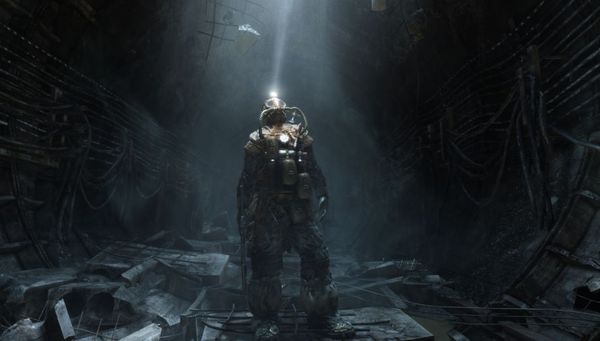Paste Goes to PAX East: Metro: Last Light
The annual PAX East is the largest gaming convention on the East Coast. Regular contributor J.P. Grant braved the miserable weather of Boston to chronicle this year’s convention for Paste. (It helps that Boston is his home.) Over the next two days we’ll be running J.P.’s thoughts on eight different games that were exhibited at the show. First up: Metro: Last Light.
Metro: Last Light
Developer: 4A Games
Publisher: Deep Silver
Platforms: PC, Xbox 360, PS3
Release Date: May 14
Price: $49.99 (PC), $59.99 (Xbox 360, PS3)
“Definitely, the scariest monsters of Metro 2033 were humans. And so it will be in the second game.” Author Dmitry Glukhovsky, who wrote the post-apocalyptic novel that inspired the 2010 shooter, tells me the world of upcoming sequel Metro: Last Light won’t be any sunnier. You’ll battle giant spiders and flee mutated creatures in the blasted Moscow tunnels of Last Light, “but those are just beasts. And no animal on this Earth is as cruel, as dangerous a predator, as the human being.”
Metro 2033 was remarkable in its willingness to take risks. On the surface, it was a linear FPS with some horror and stealth elements. But its world was unrelentingly bleak, and its systems, like the hidden karma mechanic, were often intentionally obtuse. Glukhovsky says only three percent of players arrived at the “good” ending, where protagonist Artyom was able to communicate with the Dark Ones, the mysterious and deadly new species rivaling humanity. Last Light picks up Artyom’s story, but assumes the majority ending—that in a colossal case of mistaken intentions, Artyom triggered a near-genocide of the Dark Ones and thus ended any chance of reconciliation (and thus, humanity’s best hope for survival). Things will, of course, go from bad to worse, as the dogmatic factions clinging to life in the Moscow subways prepare to go to war over a mysterious vault that’s rumored to hold the key to survival.
